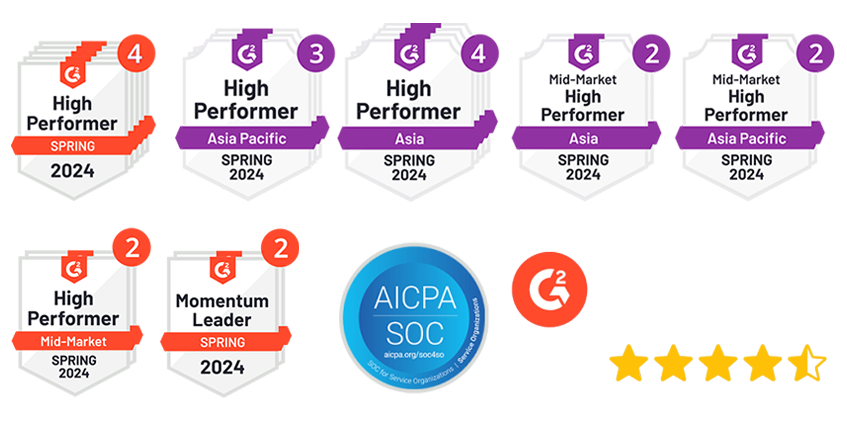Unpaid accounts receivable are a major contributor to cash flow issues for numerous businesses. As a result, a company’s spending power may become significantly constrained or completely exhausted. Ensuring a healthy cash flow is essential for every business’s prosperity, which necessitates effective accounts receivable management.
Efficient AR management involves diligently monitoring crucial accounts receivable metrics. One of the key metrics that businesses should track is the average collection period. This critical metric calculates the time required to collect your AR, offering insights into whether the average duration is suitable for your business.
If you’re interested in understanding the average collection period in accounts receivable, its significance, formula, and how to compute your own, this article is tailored for you.
What Is the Average Collection Period?
The average collection period for accounts receivable is the number of days, on average, that a business takes to collect payments on outstanding AR. This metric demonstrates the duration before customers settle their unpaid invoices, commencing from the credit sale date.
Many businesses rely on credit sales to acquire and retain customers. These businesses anticipate receiving payment on a pre-established date, while the unsettled credit sale is recorded as accounts receivable.
Understanding the average collection period can offer insights into your business’s future cash flow projections. This metric allows you to assess your liquidity, ensuring sufficient incoming cash to cover daily necessities and more.
When analyzing the metrics, a key guideline is:
- A low average collection period indicates an efficient collections process, with prompt payments received shortly after invoicing customers.
- A high average collection period suggests an inefficient collections process, potentially signaling upcoming cash flow difficulties due to delayed receivables collection.
In either case, the average collection period of accounts receivable serves as a direct indicator of your business’s overall effectiveness in managing its processes.
How Average Collection Period for Accounts Receivable Works
Accounts receivable (AR) is the money owed to a company by customers who have purchased goods or services on credit. Listed as current assets on a company’s balance sheet, AR demonstrates liquidity, reflecting the capacity to settle short-term debts without depending on additional cash inflows.
The accounts receivable collection period is a financial indicator that represents the average number of days between a credit sale and the date of the customer’s payment.
The average collection period for accounts receivable serves as an index for a company’s AR management practices. Proper administration of the AR collection period is critical for the agility of the organization.
A lower average collection period is typically more desirable, as it indicates the company’s ability to collect payments more rapidly. However, this may also suggest that the company’s credit terms are excessively stringent, potentially causing customers to seek suppliers or service providers with more accommodating payment terms.
Consequently, businesses must find a balance in their AR collection practices to preserve customer satisfaction while securing timely payment collection.
The average collection period formula is essential for determining how efficiently a company manages its receivables. By closely monitoring this metric, businesses can optimize their AR management and improve cash flow.
Importance of Calculating Average Collection Period
Monitoring the average collection period is crucial for businesses, and here are two significant reasons why:
Cash Flow Projection
The average collection period provides a transparent view of a company’s collections scenario, enabling proactive cash flow planning. For example, if the average collection period is 25 days, and outstanding receivables totaling $500,000 have a 20-day maturity, businesses can anticipate receiving payments within approximately a week.
Evaluating Credit Terms
The average collection period plays a pivotal role in assessing credit terms. While a lower average collection period is generally favorable, it’s essential to compare it with industry peers. Deviations may indicate overly strict credit terms. For instance, if a company’s average collection period is 15 days, while the industry average is around 30 days, it could affect customer acquisition.
In simple terms, maintaining an optimal average collection period enables your business to have a greater growth potential. The average collection period formula plays a significant role in determining the efficiency of your company’s AR management. By closely monitoring this metric, businesses can enhance their cash flow and ensure a more robust financial standing.
How to Calculate Average Collection Period
Step 1. Calculate average accounts receivable
| Average Accounts Receivable = (Starting Receivables + Ending Receivables) / 2 |
Step 2. Calculate net credit sales
| Net Credit Sales = Sales on Credit − Returns and Sales Allowances |
Step 3. Calculate the accounts receivable turnover ratio
| Accounts Receivable Turnover Ratio = Total Net Credit Sales / Average Accounts Receivable |
Step 4. Calculate the average collection period
| Average Collection Period = (Average Accounts Receivable / Total Net Credit Sales) ✕ 365 OR Average Collection Period = 365 Days / Accounts Receivable Turnover Ratio |
For example, if your company had a net credit sales amounting to $1.5M and an average AR balance of $150,000 in last year. Using the receivables turnover formula,
ART ratio = $1,500,000 / $150,000 = 10
We get an accounts receivable turnover ratio of 10. Since this receivables turnover was for a prior year, you’ll have to substitute 365 for “days.”
Therefore, Average Collection Period = 365/10 = 36.5
Average Collection Period Vs Days Sales Outstanding
Days Sales Outstanding and Average Collection Period, analyze the same metric, which is how long it takes, on average, for customers to settle their unpaid invoices. However, the two use different formulas to arrive at their consecutive results.
DSO is calculated by dividing the total number of AR during a period by net credit sales during that same period. You then need to multiply the result by the number of days you’re trying to measure.
| DSO = (Average Accounts Receivable / Revenue) x 365 Days |
Let’s say your company has an accounts receivable balance of $150,000 while making a $1.5M net credit sale in the prior fiscal year. Using the DSO formula, we can calculate the days sales outstanding in the number of days.
DSO = ($150,000 / $1,500,000) * 365
DSO = 36.5 days
In this example, your company takes 36.5 days to collect cash from customers. Quite similar to our example above on the average collection period.
Utilizing Average Collection Period for Business Success
Companies compare their average collection period to their policies regarding customer payment terms. For example, having a collection period of 36.5 days on top of a 45-day company payment policy shows you’re efficient at collecting what customers owe.
On the other hand, a 36.5-day average collection period under a 15-day payment policy means that you might not be collecting as efficiently as you should.
You can also use this metric in comparison to industry standards. Find out the specific period that’s acceptable for your particular industry. Also, comparing your AR collection period to other firms in your industry, particularly those who you know perform well, can help you gauge how well your cash management is doing.
If you want, you can plot consecutive AR collection periods to form trend lines, on a month-over-month basis. Trends allow you to spot problems by watching for spikes and drops in your AR collection period trend.
Here are a few KPIs you should track with the average collection period to get a holistic view:
Closing Thoughts
Understanding and calculating your average collection period is crucial for managing your accounts receivable effectively. By monitoring this metric, you can gain insights into your business’s cash flow health and identify areas for improvement in your credit and collection processes.
Peakflo’s Accounts Receivable solution can help streamline these processes, allowing you to automate invoice management, track payments, and generate AI-powered reports for a more accurate analysis of your average collection period. With Peakflo, you save 1000+ man-hours per month, get paid at least 20 days faster, and ensure a healthy cash flow for your business.
FAQ
What is the collection of accounts receivable?
Accounts Receivable (AR) collection refers to the process of collecting outstanding payments from customers or clients for goods or services provided on credit. It is a critical aspect of financial management for businesses, as it directly impacts cash flow and the overall financial health of the company.
What are the average days in accounts receivable?
Acceptable figures range from as low as 30 days to as high as 70. Some industries typically experience higher accounts receivable days, like in the 50 to 70-day range. Others are accustomed to a lower figure, such as 30 days.
What is the average collection period formula?
The average collection period is calculated by dividing a company’s yearly accounts receivable balance by its yearly total net sales; this number is then multiplied by 365 to generate a number in days.
What is the formula for average accounts receivable?
Average accounts receivable is the sum of starting and ending accounts receivable over a time period (such as monthly or quarterly), divided by two.










![Why AI Sales Calls Are Making Good Sales Reps Even Better [2025 Guide] ai sales calls](https://blog.peakflo.co/wp-content/uploads/2025/09/65168cf6-3001-4733-8cbc-12d5684cf449-218x150.webp)







































